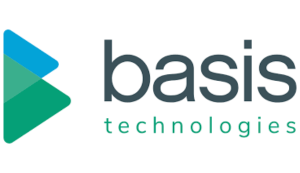SAP RPA
Filter By
Browse By
- SAP Analytics and AI
- SAP Application Development and Integration
- All SAP Application Development and Integration
- SAP ABAP
- SAP ABAP Development Tools
- SAP ABAP Test Cockpit
- SAP API Management
- SAP BAPI
- SAP Basis
- SAP BRF
- SAP Business Application Studio
- SAP CMS
- SAP Design Studio
- SAP Development Tools
- SAP DevOps
- SAP EAI
- SAP EDI
- SAP Extension Suite
- SAP Fiori
- SAP Fiori Elements
- SAP Integration Suite
- SAP Low Code Application Development
- SAP Low Code Automation
- SAP Netweaver
- SAP Release Management
- SAP UI5
- SAP Web Application Server
- SAP Web IDE
- SAP Business Process Management
- SAP Center of Excellence
- SAP CIO
- SAP Customer Experience
- SAP Data and Data Management
- All SAP Data and Data Management
- SAP BW
- SAP BW/4HANA
- SAP Crystal Reporting
- SAP Data Archiving
- SAP Data Center
- SAP Data Governance
- SAP Data Integration
- SAP Data Migration
- SAP Data Quality
- SAP Data Services
- SAP Data Strategy
- SAP Data Visualization
- SAP Data Warehouse Cloud
- SAP DMS
- SAP Document Control
- SAP EIM
- SAP ETL
- SAP ETL Tools
- SAP HANA
- SAP HANA Administration
- SAP HANA Deployment Infrastructure
- SAP HANA Studio
- SAP Master Data
- SAP Master Data Governance
- SAP MDM
- SAP Enterprise Architect
- SAP Enterprise Asset Management
- SAP ERP
- SAP Finance
- All SAP Finance
- SAP Accounting
- SAP AR AP
- SAP Asset Accounting
- SAP Billing Systems
- SAP BPC
- SAP BRIM
- SAP Cash Management
- SAP Central Finance
- SAP Controlling
- SAP COPA
- SAP Cost Center Accounting
- SAP e-invoicing
- SAP FICO
- SAP Finance Automation
- SAP Financial Closing Cockpit
- SAP Financial Consolidation
- SAP Financial Planning
- SAP FX Risk
- SAP General Ledger
- SAP Global Tax Management
- SAP Hyperion
- SAP Order to Cash
- SAP Payment Processing
- SAP Profitability Analysis
- SAP Rebate Management
- SAP S/4HANA Finance
- SAP Universal Journal
- SAP Governance Risk and Compliance
- SAP Human Capital Management
- SAP Intelligent Technologies
- SAP Platform and Technology
- All SAP Platform and Technology
- SAP Business Technology Platform
- SAP Cloud Connector
- SAP Cloud Integration Platform
- SAP Cloud Migration
- SAP Cloud Platform
- SAP Cloud Providers
- SAP Cloud Strategy
- SAP Container Platform
- SAP Digital Asset Management
- SAP Digital Integration Hub
- SAP Digital Signature
- SAP HANA Enterprise Cloud
- SAP HEC
- SAP Hyperscalers
- SAP Infrastructure
- SAP Messaging
- SAP Smart Forms
- SAP Quality and Testing
- SAP Security
- SAP Spend Management
- SAP Supply Chain Management
- All SAP Supply Chain Management
- SAP APO
- SAP Asset Management
- SAP Business Network
- SAP Digital Manufacturing Cloud
- SAP Digital Twin
- SAP EWM
- SAP IBP
- SAP Inventory Management
- SAP Label Printing
- SAP Logistics
- SAP Manufacturing
- SAP Manufacturing Automation
- SAP MES
- SAP MII
- SAP MM
- SAP MRO
- SAP MRP
- SAP Order Management
- SAP Plant Maintenance
- SAP PLM
- SAP Production Planning
- SAP S&OP
- SAP SD
- SAP SPM
- SAP Supply Chain Planning
- SAP Track and Trace
- SAP Transportation Management
- SAP System Administration
What Is Robotic Process Automation?
Robotic process automation (RPA) refers to a set of tools that use technologies to replicate back-office and repetitive tasks that are done manually by humans. Examples of such tasks are data extraction, populating forms, file transfers, etc. RPA tools deploy scripts which mimic human processes and are also able to execute various activities and transactions across software systems that are unrelated. These technologies use rule-based software to perform business process tasks at a high-volume, thereby allowing humans to focus on more critical or innovative work. RPA technologies allow executive leaders and other key decision makers to propel their digital transformation journeys and extract a high return on investment (ROI) from their workforce.
What Is Robotic Process Automation?
Robotic process automation (RPA) refers to a set of tools that use technologies to replicate back-office and repetitive tasks that are done manually by humans. Examples of such tasks are data extraction, populating forms, file transfers, etc. RPA tools deploy scripts which mimic human processes and are also able to execute various activities and transactions across software systems that are unrelated. These technologies use rule-based software to perform business process tasks at a high-volume, thereby allowing humans to focus on more critical or innovative work. RPA technologies allow executive leaders and other key decision makers to propel their digital transformation journeys and extract a high return on investment (ROI) from their workforce.
Benefits of RPA
RPA tools deliver many benefits for the clients. Some of the key benefits are:
- No or low coding: RPA tools today do not require developers to generate automation. Intuitive drag-and-drop interfaces can be used to create automation workflows.
- Cost savings: RPA tools increase productivity by reducing workloads.
- Enhanced customer experience: RPA allows humans to focus on innovation and customer interactions, thereby enhancing customer experience.
- Improved employee morale: RPA allows humans to focus on more interesting and productive tasks, thereby increasing workforce morale.
- Better accuracy and compliance: Human errors are eliminated, which often leads to better process accuracy and quality.
What Should You Look For in an SAP RPA tool
There are a plethora of RPA tools in SAP ecosystem. Not all of them are the same. However, when it comes to evaluation, some tools are definitely better than others. At a high level, you can use three key characteristics to evaluate RPA tools:
- Self-service. The tool should be easy to use with almost no coding involved. Tool setup should be intuitive and fast. Self-service means that it can be leveraged by users with all levels of expertise.
- The tool should enable you to automate transactions across many business processes, within the SAP system as well as any legacy systems.
- Incorporates several best-of-breed technologies. Examples of these technologies include UI recording, optical character recognition, and self-healing.
112 results
-

Scale RPA at Enterprise Level with an Automation Operating Model (AOM)
Published: 08/December/2022
Reading time: 1 min
Automation is becoming the primary digital transformation need for most enterprises. Irrespective of the business size, leveraging automation technologies like Artificial Intelligence (AI), and Robotic Process Automation (RPA) in combination is the futuristic vision. Automation is also a shift of mindset for industries as it requires a change in practice with current manual processes which…
-

Build an Integrated Financial Platform Strategy for SAP S/4HANA
Published: 01/October/2017
Reading time: 17 mins
Many companies are eager to move to SAP S/4HANA Finance to take advantage of the in-memory platform’s improved capabilities and real-time reporting. However, it is important to ensure your data and processes are ready to take full advantage of what SAP S/4HANA Finance has to offer. Read the transcript of the discussion with Dolphin and…
-

- SAP RPA
 Premium
Premium
RPA, AI, oh my! What you need to know about the technologies that drive automation
Automation technologies have always been present. In today’s landscape there are more options for solutions and intelligent automation. This can create great value but only through careful design and implementation. Automation can enable businesses to reduce errors, improving quality and increase overall productivity. The technologies that deliver the best results in automation take the time…
-
-

- SAP Process Intelligence
 Premium
Premium
Process Intelligence on Process Automation Roadmap
Published: 03/June/2022
Reading time: 2 mins
This article highlights the emerging importance of process mining and intelligence on the process automation technology roadmap of SAPinsiders This content is for Mastering SAP Premium Access members only.Log In Join Now
-

Embrace HR Technology Trends to Maximize SAP S/4HANA Migration with SuccessFactors
Published: 17/April/2023
Reading time: 3 mins
The HR technology landscape is undergoing a rapid transformation, with cutting-edge trends redefining how organizations manage their workforce. As companies embark on their SAP S/4HANA migration journey, many are considering these latest trends as they transition from SAP Human Capital Management (HCM) to SAP Human Experience Management (HXM) in SuccessFactors. In this article, we will…
-

- SAP Process Intelligence
 Premium
Premium
From Partial to Full Process Visibility
Published: 18/January/2023
Reading time: 7 mins
With 46 percent of organizations stating that knowing which processes to automate is one of the biggest roadblocks to implementing automation for S/4HANA1, the need to identify and understand business processes is heightened. Especially for those considering a move to SAP S/4HANA, knowing what to move to the cloud is critical, which necessitates assessing where…
-

Ease Reporting On Payroll Results With Dedicated Payroll Infotypes
Published: 15/December/2007
Reading time: 12 mins
Set up standard Payroll infotypes to read payroll results without extensive programming or third-party products. In five steps you can extract the payroll results to infotypes. Then display the results, using standard transaction codes, or add them to a custom InfoSet for the creation of flexible queries. Key Concept Payroll infotypes are standard infotypes that…...…
-
-

New Automation Needed for Modern IT Environments
Published: 28/October/2021
Reading time: 7 mins
Today’s IT landscapes are becoming more diverse as IT leaders adopt new applications to better support their business requirements, and as the infrastructure itself becomes a hybrid blend of cloud and on-premise infrastructure. These changes impact the types of processes that run, where they run, and how they interface with the SAP ecosystem. This growing…
-

How to Implement the Linear Regression Technique in SAP Integrated Business Planning for Demand
Published: 21/April/2017
Reading time: 23 mins
SAP Integrated Business Planning for demand is the equivalent of SAP Advanced Planning and Optimization (SAP APO) Demand Planning. While SAP APO has an out-of-the-box forecast model that uses a linear regression technique to forecast, SAP Integrated Business Planning does not have it. The purpose of this article is to understand the solution approach to…...…
-

Build Industry Solutions with SAP S/4HANA and IBM Watson deployed on IBM Cloud
Published: 01/October/2017
Reading time: 22 mins
Manufacturing company Mondi is using SAP S/4HANA, IBM Cloud and Watson APIs to automate month end processing. An Asian transportation company transformed to ward off stiff competition from Uber and Grab by combining IBM Weather data with Cognitive Fleet management. How can you create new solutions for your industry with SAP and Watson Solutions? What…
Featured Experts
-

Varun Bhatt
Partner - SAP Rise
Become a Member
Unlimited access to thousands of resources for SAP-specific expertise that can only be found here.
Upcoming Events
Related Vendors
Your request has been successfully sent


